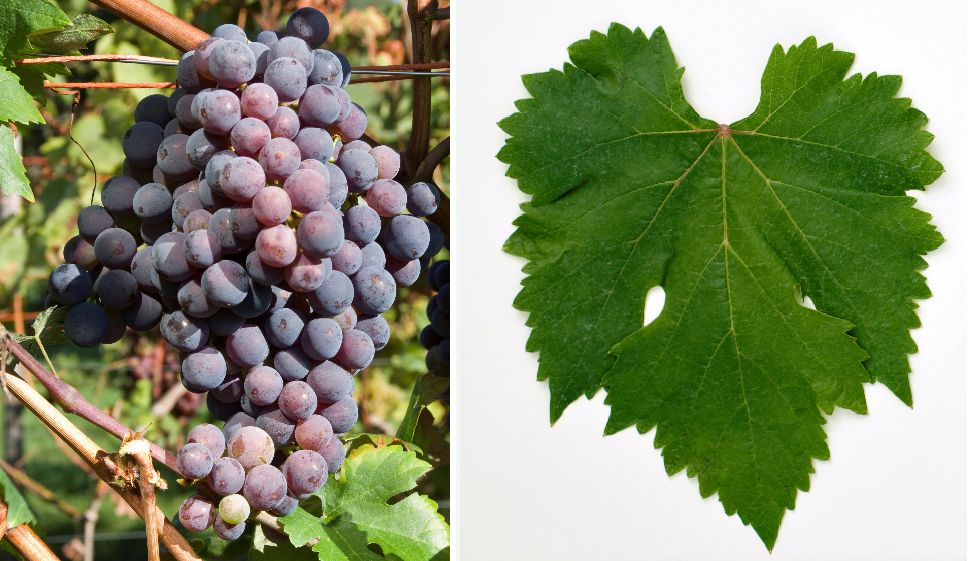The red grape variety originates from Spain, but has mainly established itself in South America. Synonyms grouped alphabetically by country are (other main names in bold) Criolla, Criolla 6, Criolla Chica, Criolla Peru, Uva Negra, Uva Negra Vino (Argentina); Negra Antigua, País, Uva Chica Negra, Uva del País, Uva Negra, Uva Tinta, Viña Blanca, Viña Negra (Chile); Creole Petite, Listan Violet, Printanier Rouge (France); California, El Paso, Mission, Mission's Grape (California); Hariri, Hariri Noir, H'riri (Morocco); El Paso, Misión(Mexico); Negra Corriente, Negra Corriente ICA, Negra Corriente Majes, Negra Corriente Tacna, Negra Peruana, Rosa del Perú(Peru); Arjunção, Listrão(Madeira resp. Portugal); Almuñeco, Comun de las Palmas, Forastero Negro, Moscatel Negro, Moscatel Negro du Perou, Palomina Negra (Canary Islands and Spain).

Descent & descendants
The etymological meaning of "Listán" is unclear; the Portuguese "prieto" means "dark" or "black". The ancestry (parentage) is unknown, possibly the parents are already extinct. Despite seemingly suggestive synonyms or morphological similarities, it should not be confused with the Jacquez, Listán Negro or Negramoll varieties. It is also not a colour mutation of the white varieties Listán de Huelva or Palomino (with synonyms Listán Blanco, Listán Comun, Listan de Jerez). Listán Prieto is an important leading variety that is cultivated under various names in many South American countries, as well as in Mexico, California and New Mexico.
According to DNA analyses, the varieties Black Prince, Blanca Oval (see Blanca Ovoide), Cereza, Criolla Grande, Moscatel Amarillo, Pedro Giménez, Torrontés Riojano and Torrontés Sanjuanino originated from presumably natural crosses (probably in Argentina) between Listán Prieto x Muscat d'Alexandrie. These varieties are therefore counted as part of the Criolla group. Listán Prieto was also a parent of the Canela, Jaén Tinto, Perruno, Quebranta and Verdejo de Salamanca varieties.
Plantations in America
Originating from Castile-La Mancha, the variety was described as early as 1513 by the agronomist Gabriel Alonso de Herrera (1470-1539) under the name Palomina Negra. Around 1540, it was brought to Mexico by Spanish Franciscan monks, where they founded several missions. The variety now known as Misión was used to make the essential mass wine. It is not certain whether this was the first European Vitis vinifera in Mexico, as this is also attributed to the Spanish conquistador Hernando Cortez (1485-1547), who had already appeared there around 20 years earlier and also brought vines with him. The vine only arrived in California from Mexico over 200 years later in 1769 through the Franciscan monk Junipero Serra (1713-1784) and was now called Mission.
In the middle of the 16th century, it was quickly introduced to Peru, Chile and Argentina by Spanish colonists and was the most important grape variety there until the 19th century, when it was slowly replaced by European varieties. In the mid-sixteenth century, it arrived in the Canary Islands (according to another interpretation, from there to South America) and was confusingly called Moscatel Negro, although it is not related to any Muscat variety. In 1629, the Misión was cultivated by Catholic missionaries in the Rio Grande Valley in southern New Mexico. This made it the first successfully cultivated European variety in North America; earlier attempts had failed due to phylloxera.
Characteristics & cultivation areas
The vigorous and high-yielding vine is resistant to drought, but susceptible to Pierce's disease and root gall. Individual bunches can reach a weight of up to four kilograms. The light red berries produce simple rosé or dark white wines, which are bottled for mass consumption in Tetra Paks, tubular containers and large bottles. They are often blended with colourful red wines. In Spain, it was almost wiped out by phylloxera in the 19th century. However, it is still cultivated on the Canary Islands. It is particularly well represented in Chile, where it occupies 9,693 hectares of vineyards. There are further populations in Argentina (374 hectares) and California (200 hectares). The variety occupied a total of 10,267 hectares of vineyards in 2016. This puts it in 70th place in the global grape variety ranking.
Source: Wine Grapes / J. Robinson, J. Harding, J. Vouillamoz / Penguin Books Ltd. 2012
Images: Ursula Brühl, Doris Schneider, Julius Kühn Institute (JKI)
Voices of our members

In the past, you needed a wealth of encyclopaedias and specialist literature to keep up to date in your vinophile professional life. Today, Wine lexicon from wein.plus is one of my best helpers and can rightly be called the "bible of wine knowledge".
Prof. Dr. Walter Kutscher
Lehrgangsleiter Sommelierausbildung WIFI-Wien